Darjeeling tea popularly hailed as the ‘Champagne of Teas’, is the only tea in the world to procure a GI (Geographical Indication) trademark. In 2023, Darjeeling’s tea production (6.1-6.3 million kgs) was believed to be the lowest yield in over 50 years (Mukherji, 2024). “A 1993-2013 study by the ‘Darjeeling Tea Research and Development Centre’ discovered that the temperature has risen by 0.5 degrees Celsius, with a decline in annual rainfall (152.5 cm) and relative humidity (16.07%) leading to an overall production decline” (Sarkar, 2023). The Hindu (2023) stated that many planters cite old tea bushes, climate change, and pest attacks for the decline. Simultaneously, the demand for Darjeeling tea is waning.
In 2023, Darjeeling’s tea production (6.1-6.3 million kgs) was believed to be the lowest yield in over 50 years (Mukherji, 2024).
The Wire (2023) reported that nearly half of Darjeeling’s annual produce is exported. Europe, one of the major exporters’ demands has fallen by 10-15%, due to the Russia-Ukraine War and Germany’s recession, additionally, exports to Japan have also decreased. Sarkar (2023) writes that the Darjeeling tea industry was severely affected by the 2017 Gorkhaland Movement1,this political upheaval led to a large-scale out-migration from the hills. Singh (2023) writes that tea growers in the hills say the 2017 nearly five-month shutdown in the hills proved disastrous for the tea industry, and it could never fully recover from it. Furthermore, global importers discovered ‘Nepal Tea’ as a cheaper alternative and even domestic buyers began to blend Darjeeling tea with Nepal tea (ibid).
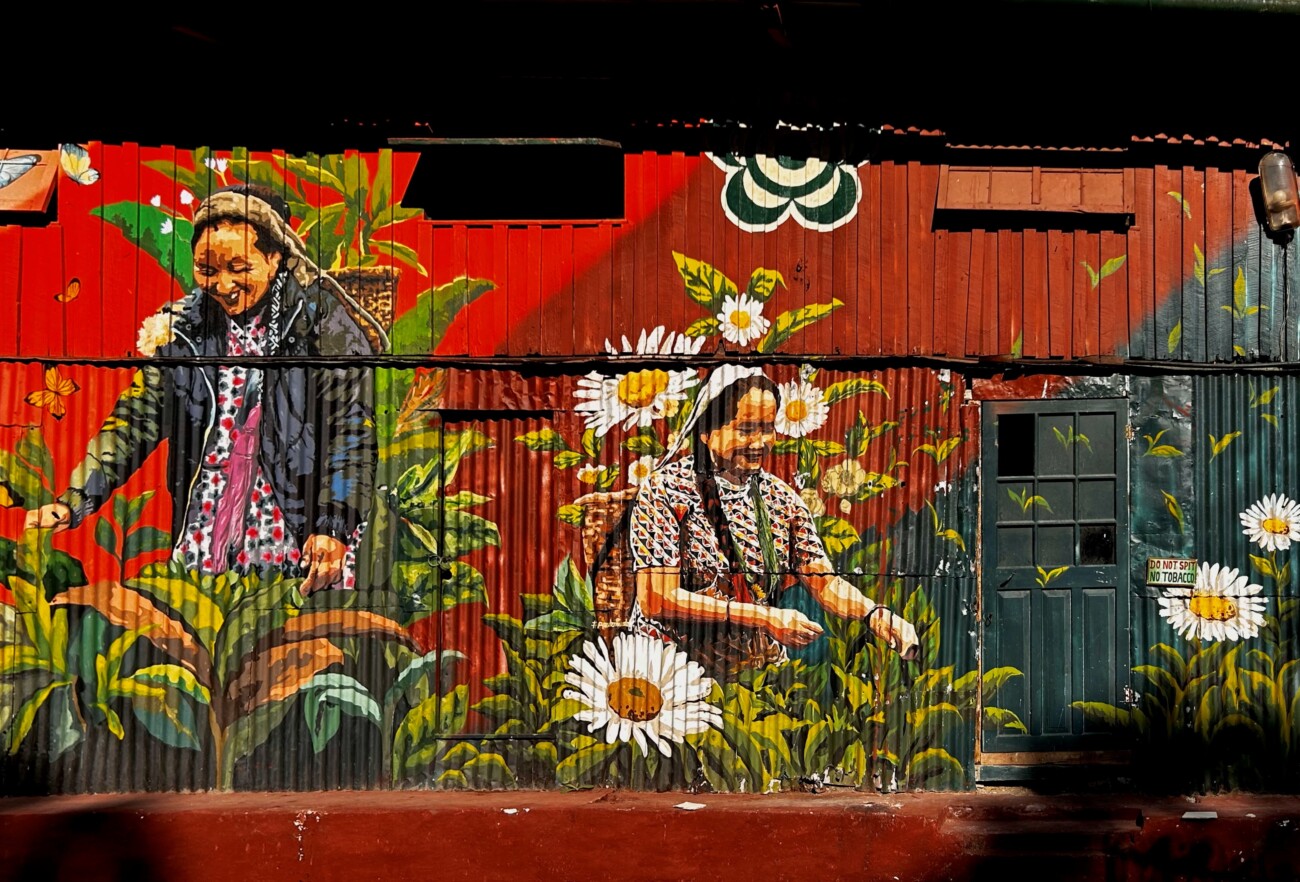
The low pay, poor working conditions, uncertainty, and expectations for a better life have led to absenteeism in the tea estates...There are 87 tea gardens in Darjeeling, but the tea industry’s future seems to be shrouded in uncertainty.
Darjeeling’s tea workers are growing apprehensive about their futures. Singh (2023) reported the Darjeeling tea industry directly and indirectly employs about 300,000 people, which includes 55,000 female tea pickers. The workers are paid Rs 250 a day, which they say is impossible to live on. “The workers are paid meagre wages, bound by a colonial labour system without land rights and little access to government schemes” (IndiaSpend, 2023). They believe their educated children shouldn’t have to work underpaid jobs in tea gardens. The low pay, poor working conditions, uncertainty, and expectations for a better life have led to absenteeism in the tea estates. In 2022, the DOTEPL (Darjeeling Organic Tea Estates Pvt. Ltd) abandoned ten tea estates- Happy Valley, Ambootia, Monteviot, Magarjung, Moonda-Bansghari, Rongmook Cedar, Chongtong, Alubari, Rangaroon, and Pandam. Banerjee (2022) reported their workers had been agitating with the management for failing to pay their wages along with PF and gratuity. Jeetendra Malu, the ‘Darjeeling Tea Association’ president said that nearly 30 per cent of the gardens are defaulters and have not cleared statutory staff benefits like provident funds and gratuities (Singh, 2023). Furthermore, the ‘Indian Tea Exporters Association’ chairman Anshuman Kanoria shared many of Darjeeling’s tea gardens are on the verge of closure as operations cannot be sustained with rising production costs and low yields (Hindu, 2023). There are 87 tea gardens in Darjeeling, but the tea industry’s future seems to be shrouded in uncertainty.
Darjeeling Tea Tourism
In 2013 the Tea Tourism policy was first introduced in West Bengal...In 2019, an updated version of the Tea Tourism and Allied Business Policy was announced... Chettri and Saha (2023) reported, " West Bengal government has received 16 proposals with a combined investment of Rs 1,400 crore to develop tourism and allied businesses in the tea gardens of North Bengal".
Amidst the deterioration and uncertainty looming across Darjeeling’s tea estates, the 2013 Tea Tourism policy was introduced in West Bengal. “The term ‘tea tourism’ will broadly include tourists' overall experience amid a tea garden or estate, staying in a heritage bungalow, at a homestay or in a modern resort. Trekking in the natural beauty of a lush tea garden, undertaking a tea-testing session, visiting a modern tea factory and even trying one’s hand at plucking tea leaves are all within the idea of ‘tea tourism’. Other activities may include trekking along nature trails, witnessing local culture and patronizing local artisans” (Tea Tourism Policy of West Bengal, 2013). The policy further stated that land meant for tea tourism will be limited to 5 acres, civil construction not exceeding 1.5 acres could be undertaken in the plains, and was limited to 1 acre in the hills. News websites such as Indian Express and Economic Times reported the policy failed to thrill tea estate owners. In 2019, an updated version of the Tea Tourism and Allied Business Policy was announced. The tea gardens could utilize 15% of their total grant area, subject to a maximum of 150 acres. “Out of this allowable land, a maximum of 40% can be used for construction activities in conformity with extant Rules and Regulations and provided the proposed activity is in harmony with the ecology and environment” (Tea Tourism and Allied Business Policy, 2019). Chettri and Saha (2023) reported, “The West Bengal government has received 16 proposals with a combined investment of Rs 1,400 crore to develop tourism and allied businesses in the tea gardens of North Bengal. Two proposals were for a hotel on Chandmani tea estate in Siliguri from the Luxmi Tea Company Pvt Ltd , and another for a resort in the Upper Fagu tea estate in Kalimpong. Altogether, the 16 proposals are projected to create 4,571 jobs. In four gardens, there are plans to set up black and white pepper plantations, medicinal plant plantations, a nursing school, a hospital, a university, and a food processing unit with cold storage”. One wonders how these policies will benefit Darjeeling’s local people.
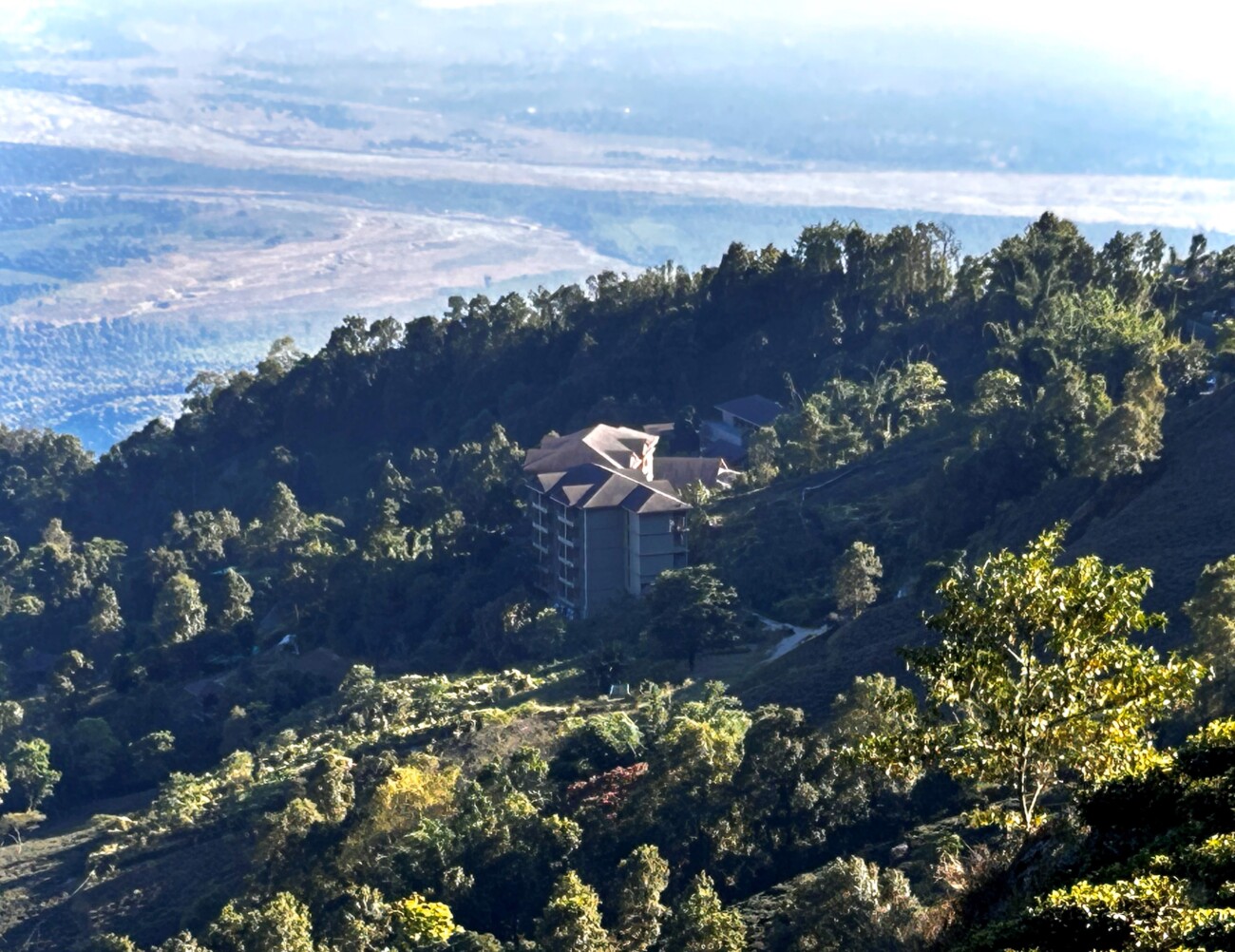
Dey (2023) writes on Darjeeling’s tea resorts, “Luxury is the name of the game—to experience, even for a few days, what life is like to the manor born.” The question that inevitably arises is, what is the reality of this ‘luxury’?
At present, there are eleven tea resorts in Darjeeling. Eight of them are renovated tea estate bungalows such as the Chamong Chiabari Resort, Makaibari Ama Resort, Glenburn Tea Estate Hotel, Sourenee Tea Estate & Boutique Resort, Singtom Resort, Ging Tea House, Goomtee Tea Garden Retreat, and Tumsong Tea Retreat. The remaining three resorts Makaibari’s Taj Chia Kutir Resort & Spa, Mayfair Tea Resort in New Chumta, and Mayfair Manor in Jungpana are new constructions. There has also been a steady rise in homestays within Darjeeling. “Since 2012, homestays have steadily increased from 200 to 550 in 2021” (Sharma & Chettri, 2023). Chettri and Saha (2023) reported that tea tourism garnered varied responses, with one section supporting the government’s efforts, and another section worried about the tea industry’s destruction with producers focused on furthering their business than on tea production. Dey (2023) writes on Darjeeling’s tea resorts, “Luxury is the name of the game—to experience, even for a few days, what life is like to the manor born.” The question that inevitably arises is, what is the reality of this ‘luxury’?
Makaibari Tea Estate2
Makaibari (cornfield in Nepali) tea estate is located in the Kurseong subdivison of Darjeeling district in West Bengal. It comprises 1700 acres of land, of which 300 acres are tea garden area and the rest is forest land. It comprises of 7 villages: Makaibari, Thapathaili, Koilapani, Kodobari, Fulbari, Cheptey, and Chungey. It was founded in 1852 by Captain Samler (Darjeeling Tea Company’s agent) and sold to Girish Chandra Banerjee. From the 1970s, Makaibari was led by Rajah Banerjee the 4th generation planter and researcher. It became the first tea garden to be certified for ‘free trade’ in the world (2% of the tea price is used for the tea workers' welfare), and the first to be certified as a fully organic tea garden. Mrs. Rita Bhujel (a Makaibari tea picker for 42 years) shared, “My job is going well. We never had problems with payment, they also provide money for medical expenses, PF, Gratuity, and Bonus.” In 2014, the Luxmi Group acquired Makaibari tea estate with Rajah Banerjee remaining Chairman; he then handed over the reins to Luxmi Group’s Rudra Chatterjee in 2017. Currently, Makaibari employs around 650 field workers and more than 60 factory workers. Mr. Nayan Lama (a coordinator of the ‘Volunteer in Makaibari’) shared, “Before 90% of Makaibari’s population depended on tea, now it's probably 70%. Back then, after a parent retired their child would replace them, they even employed unskilled labourers like the uneducated and handicapped allowing them to earn. All this has ended with the reduction of tea production, now they have a contractual system. The labourers are employed on wages for 9 months without Provident Funds or Gratuity, the out-of-station workers are provided with transport.”
In 2008, Makaibari started one of the first homestay ventures in Darjeeling ‘Volunteer in Makaibari’...The homestays are run collectively but owned by different families. It is a social welfare group, which aims to provide women tea pickers with an alternate source of income.
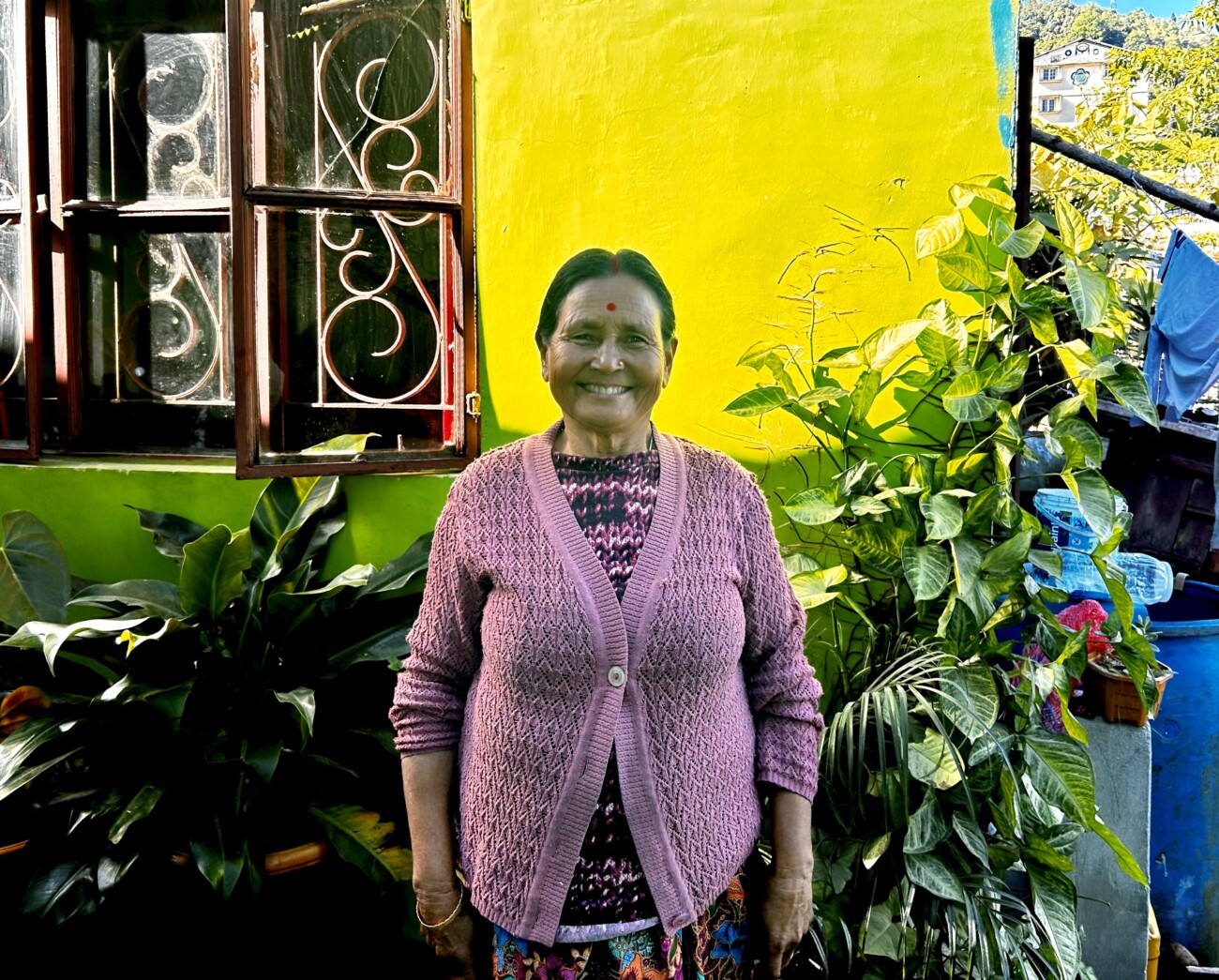
In 2008, Makaibari started one of the first homestay ventures in Darjeeling ‘Volunteer in Makaibari’, which gradually grew from 8 to 20 homestays. The homestays are run collectively but owned by different families. It is a social welfare group, which aims to provide women tea pickers with an alternate source of income. Mrs. Bhujel shared, “We constructed the room with my husband’s retirement money, he was a Makaibari tea factory worker. We have been running the homestay for 10 years, it mainly helped us educate our children as kamaan’s pay wasn’t enough.” ‘Volunteer in Makaibari’ came into being when ‘Eye to Eye’ a UK nonprofit organisation sent student volunteers to teach English and reside with local families paying for their food and lodging. The residents also credit then-owner Rajah Banerjee as he advised the workers to create rooms and provide food for guests who wanted to experience the local culture. For lodging and three meals, they charge Rs 1200- 1500. 70% goes to the host family, 20% for office use, and 10% to the ‘Makaibari Joint Body’ (composed of Makaibari’s seven villages and their respective Samajs) for the worker’s welfare. But the number of homestays has dwindled to 10. The coordinators (Mr. Lama and Mr. Bhujel) shared that things have changed since Rajah Banerjee left, alongside the COVID-19 pandemic and the rise of new homestays and resorts.
There are two resorts in Makaibari tea estate. Firstly, the ‘Makaibari Bungalow, Ama Stays and Trails’ that opened in September 2021...Secondly, the five-star ‘Taj Chia Kutir Resort & Spa’ which opened on December 2020.
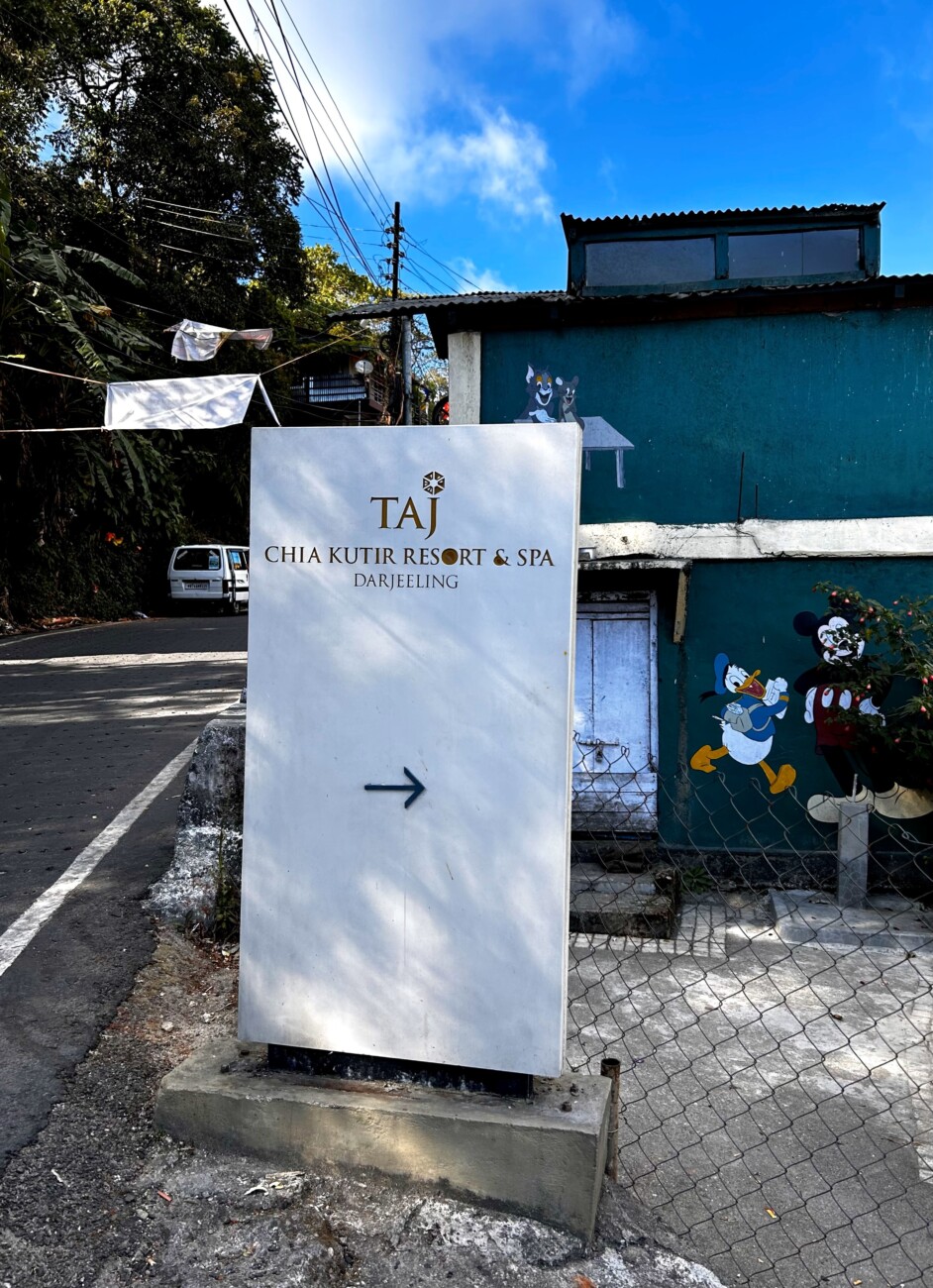
There are two resorts in Makaibari tea estate. Firstly, the ‘Makaibari Bungalow, Ama Stays and Trails’ is a 5-bedroom bungalow that opened in September 2021, and is owned by the Luxmi Tea Company in partnership with Taj, IHCL. The property has to be entirely booked and costs more than 1 lakh per night. According to respondents, the workers and kitchen staff are locals, who worked in the bungalow before its conversion into a resort. Secondly, the five-star ‘Taj Chia Kutir Resort & Spa’ opened on December 2020. It is located below Makaibari village, spread over 22 acres and consists of 72 rooms starting from Rs 30,000 per night, owned by the Ambuja Neotia group and managed by Taj, IHCL. Our respondents had varying opinions concerning the Taj Resort. Mr. Pranay Bhujel (a tourist guide and coordinator of the ‘Volunteer in Makaibari’) shared that the residents had protested at first during the resort construction as its location was shifted into an area with tea bushes. “They assured to help the locals, saying they would construct a Community Hall and Playground, but they only did a bit of fencing and painting. They had said they would employ 70% local people but now barely 10% are locals, who are mostly Group D staff like gardeners, security, kitchen helpers etc. Also, the pay is low and their workers are mostly trainees from outside Darjeeling.” Mr. Lama added, “For instance, the resort guests require transportation. We could have formed a cooperative and worked together. But as soon as the construction began, they excluded the locals.” Meanwhile, Mr. Pranam Rasaily (owner of Shalom homestay in Makaibari) shared, “If tourists come, everything works. The Taj resort has allowed smaller businesses to work.” His homestay came into being when the Taj resort’s workers required lodging close to the construction site and isn’t a part of the ‘Volunteer in Makaibari’ group.He added, “When tourists visit Makaibari, they can experience different lifestyles. For a luxurious experience, they can stay at Taj Resort or Ama Resort and reside in affordable options like homestays.”
Darjeeling’s Changing Landscape
"The workers say we have been living here for generations, we deserve land rights"- Mr.Lama
In 2022, the construction of a resort at Kurseong’s Jungpana tea garden brought up the century-long land rights issues of tea garden workers in the hills. Chhetri (2022) reported, “The land rights issue gathered steam following allegations in social media that Jungpana’s management was planning to shift worker homes for the resort. The management denied the allegations, but residents were disappointed that resort construction was ongoing while their rights were dismissed.” Ajoy Edwards a local politician, said the tea tourism policy is ironic as tea workers living in tea gardens for generations don’t have land rights while permission to build five-star hotels is granted (Chhetri, 2022). In August 2023, the scheme for distributing homestead pattas among landless tea labourers in North Bengal was announced. This scheme was widely deemed unacceptable by Darjeeling’s tea workers. Mr. Lama shared, “They should provide people with general land parja pattas. The recent offers of 5 decimals and the full parja patta are for the namesake with no actual benefits because the land is ours, we just don’t have documentation. These offers don’t let us buy, sell, or lease our land. This is a problem all over Darjeeling. The workers say we have been living here for generations, we deserve land rights. The government’s main motive is to keep the workers quiet and start more construction. Currently, the tea gardens are functioning on a government lease and if they can remove the lease, they can do whatever they want with the remaining land. Then the local people won’t have a say, so they constantly say to take up their land right offers. They have declared bastis as ‘khasmahal land’, the same should be done here.”
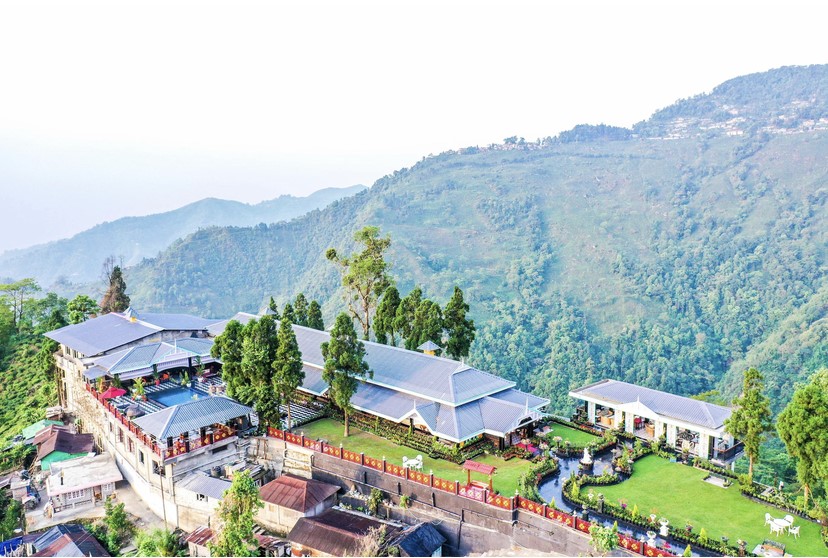
The 2013 Tea Tourism policy stated that its motive is to “diversify, generate local employment, and augment local income”, but this seems far from the reality... To operate a homestay in a tea garden area, one requires a no-objection certificate (NOC) from the management. Only a few tea gardens in Darjeeling like Makaibari and Singell etc. have permitted their tea workers to open homestays.
Unemployment is a major problem in Darjeeling. The 2013 Tea Tourism policy stated that its motive is to “diversify, generate local employment, and augment local income”, but this seems far from the reality. Chhetri & Saha (2023) reported the entrance of major stakeholders such as Indian Hotels Company Ltd, ITC, and some mid-segment hoteliers to unlock the tourism potential of tea plantations. Mr. Lama shared, “Tea tourism is this now, multinational companies coming in to construct hotels and resorts. There aren’t many benefits for the local people. Also, the natural Darjeeling tea environment is hampered.” To operate a homestay in a tea garden area, one requires a no-objection certificate (NOC) from the management. Only a few tea gardens in Darjeeling like Makaibari and Singell etc. have permitted their tea workers to open homestays.
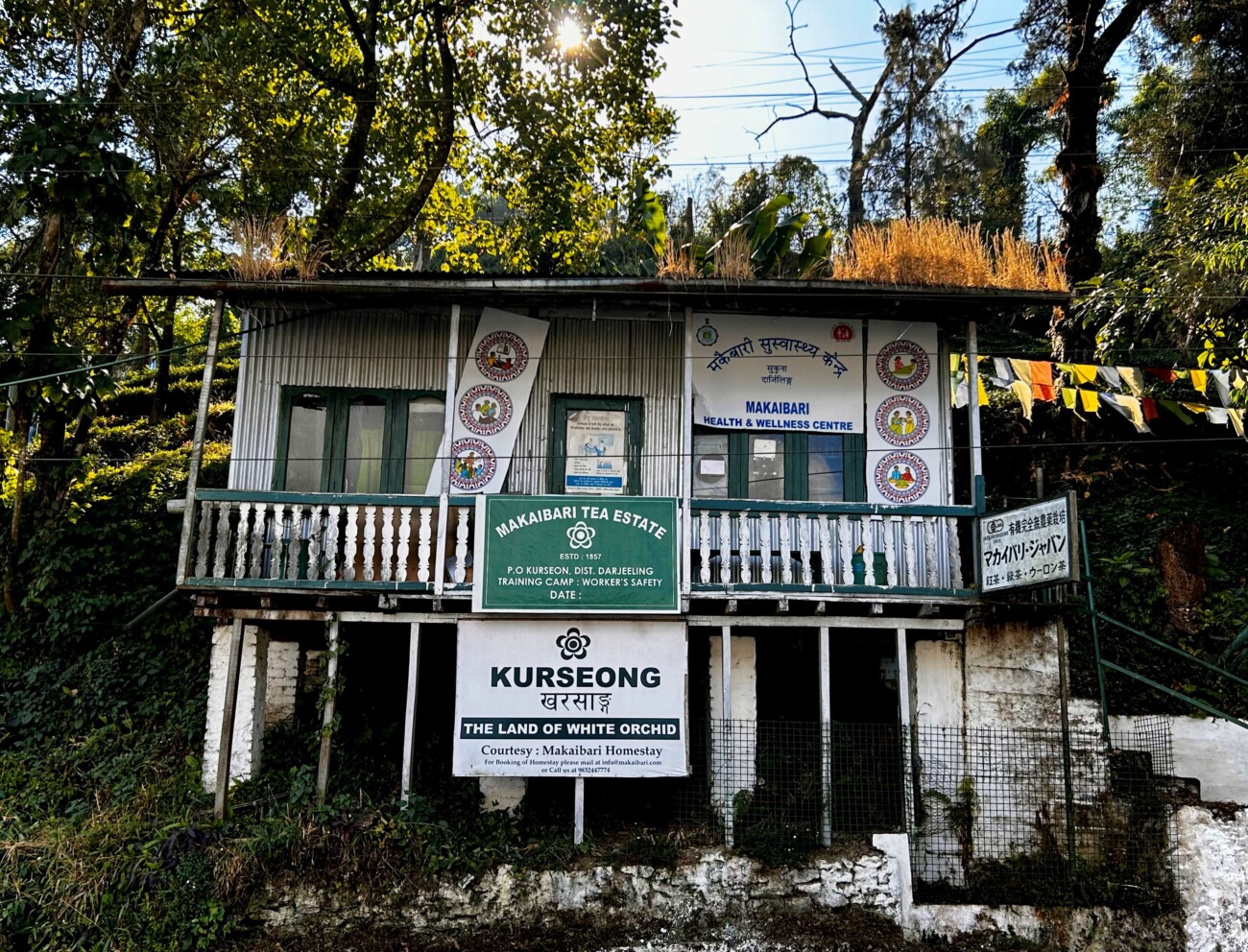
The harsh reality of the Darjeeling hills is the overspecialisation of certain skills and the underdevelopment of non-tourism-specific industries, services, and jobs.
Dey & Choudhury (2024) say Darjeeling may have caught the ‘Dutch Disease’, which occurs when a highly specialised economy based on a core resource faces a crisis when the market or core resource is threatened. Both tea and tourism in Darjeeling exhibit the term’s key feature, where land and other natural resources are leveraged to pursue a core export or activity, away from other commercial or consumption practices at the behest of the local population. They elaborate this has allowed the tea and tourism industry to flourish but makes the hill economy vulnerable to crises. Now both sectors are struggling, in the tea sector there is low production and demand, tea gardens closing, and denial of workers’ rights. At the same time, tourism is struggling due to overcrowding, resource constraints, and environmental carrying capacity. The harsh reality of the Darjeeling hills is the overspecialisation of certain skills and the underdevelopment of non-tourism-specific industries, services, and jobs.
The future of Darjeeling
“Tea production has been waning and tourism is a way to bring the tea industry back on track. All the sectors- Central Government, State Government, local government, owners, and the local people must work together to bring positive change.” - Mr. Rasaily
An opinion voiced by the four respondents is when Darjeeling tea is nurtured, tourism will prosper simultaneously.Mr. Rasaily said, “Tea production has been waning and tourism is a way to bring the tea industry back on track. All the sectors- Central Government, State Government, local government, owners, and the local people must work together to bring positive change.” They stressed the importance of providing tea workers with the necessary facilities and wages to work well. For instance, they said before the management used to handle all the issues, our people didn’t constantly have to visit the head office. This elongates the process and makes life harder for tea workers. They also stressed the importance of retaining experienced workers for the tea industry to thrive. Mr. Rasaily spoke of the need for a tea ministry, as tea brings investment and requires attention. He added, “They are finally paying attention because the tea workers aren’t like before when they believed owners were the sole authority, now our people demand their rights.”
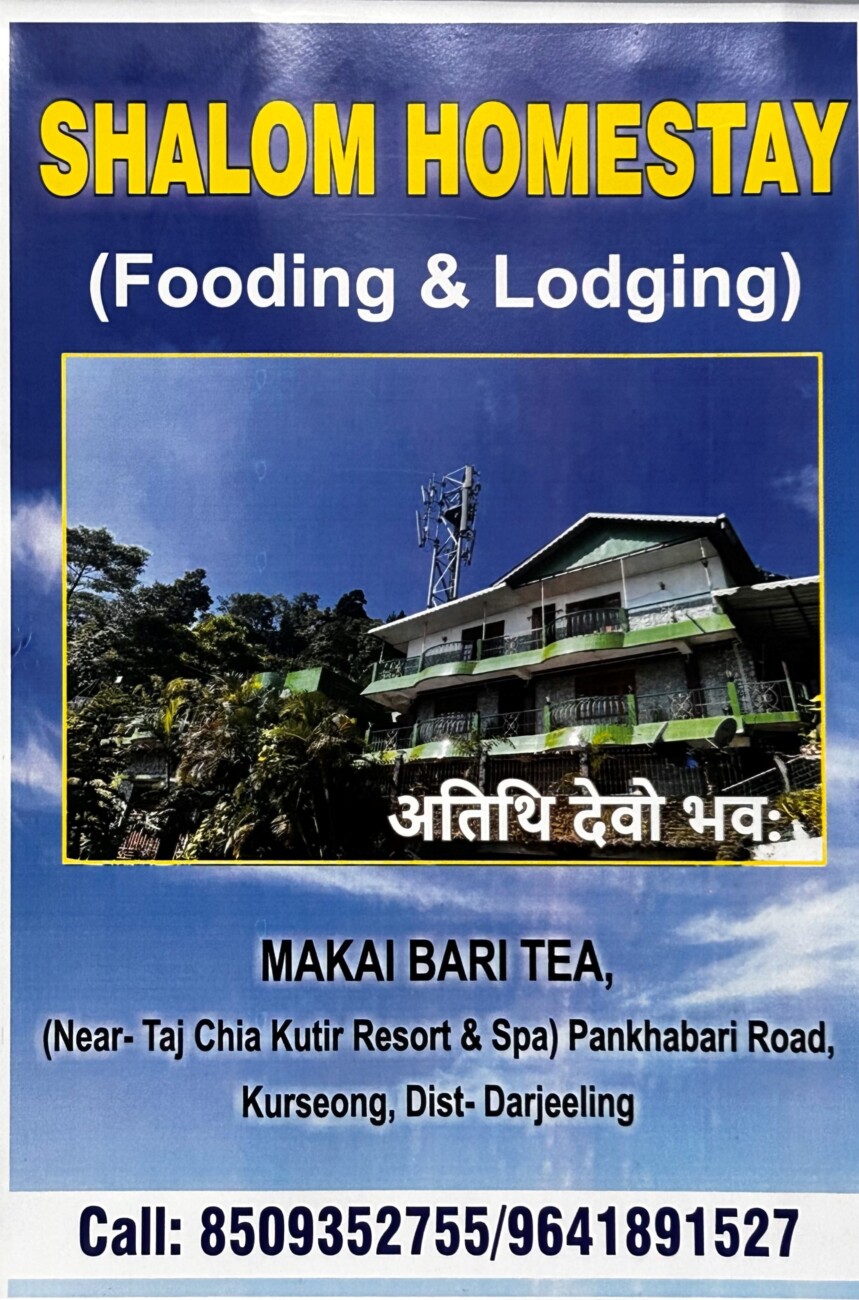
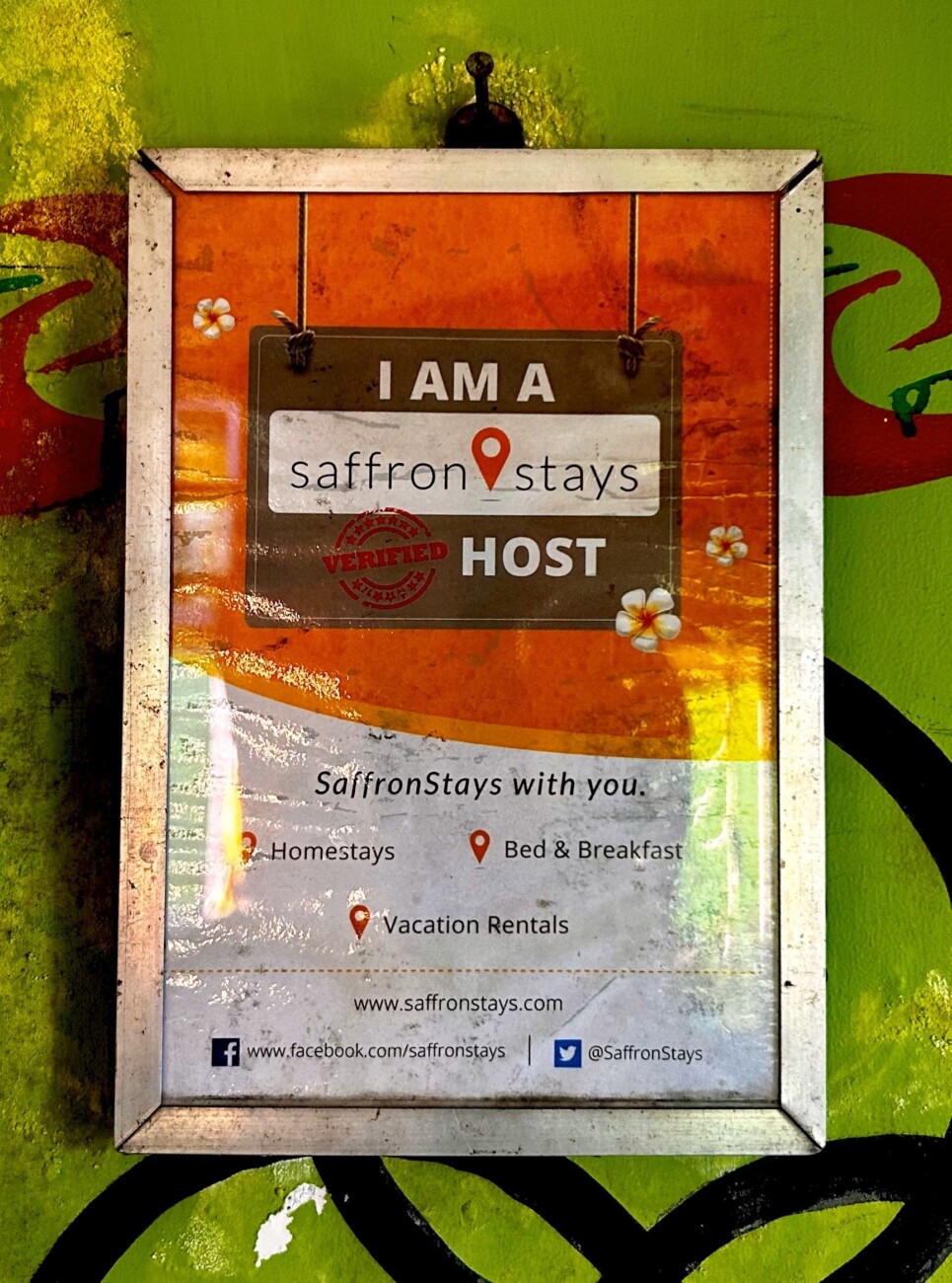
Homestay advertisements in Darjeeling/ Photo: Bibhusha Rai
Mr. Bhujel enjoys working in tea tourism as you can share your culture with new people,"In a homestay, a bond is built as the guests stay as familiars in our homes"...They also emphasized the need to preserve the environment, in the face of climate change and tourism.
Mr. Bhujel shared, “Tea tourism helps the tea industry as tourists buy Darjeeling Tea. Our tea worker's daily wage of Rs 250 isn’t enough to survive and unemployment is a problem. When people visit, local people can earn through accommodation and car fares.” Mr. Rasaily believes that the homestay sector provides people with time for their personal lives and has broadened his perspective, “It made me realise how hard women work at home.” Mr. Bhujel enjoys working in tea tourism as you can share your culture with new people. He also shared that homestays differ from hotels, “In a homestay, a bond is built as the guests stay as familiars in our homes. You meet people from Delhi, Bombay, and Calcutta. In times of distress, if we go there, they can help us.” They also emphasized the need to preserve the environment, in the face of climate change and tourism. Mr. Rasaily said, “If tea tourism is taken forward properly, it will be good. But we shouldn’t damage our natural environment. People shouldn’t construct buildings in beautiful places or residential areas just because the Government has permitted them. A resort in such locations may prosper, but they shouldn’t destroy that place.” Mr. Bhujel said maintaining the environment is the responsibility of the local people as it provides them with income. “We have to work as a community. Responsibility for cleaning has to be prioritized and homestays have to learn management. Makaibari has employed three people to pick up trash, and fair-trade NGOs have set up dustbins for different trash disposals. If similar facilities are available throughout Darjeeling, it would be good.”
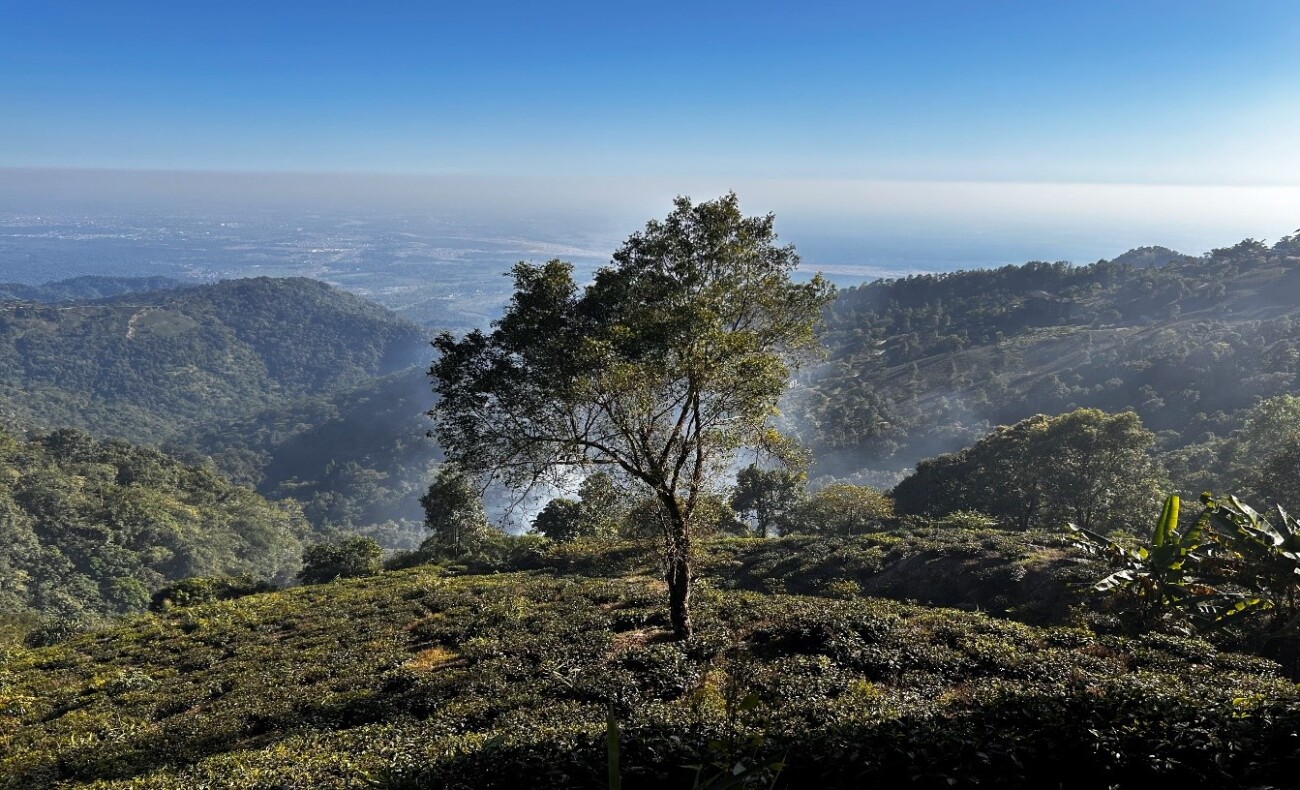
Darjeeling’s residents hope that the tea tourism sector will serve as an example of diversification while including the local people as stakeholders, and will seek to preserve the environment.
Dey & Choudhury (2024) compare Darjeeling to the neighbouring state of Sikkim as an example of a way forward. In Sikkim, since the 1970s several diverse and non-competing industries such as breweries, cosmetics, corrugated boxes, and food processing were set up. Furthermore, Sikkim’s socio-political scenario also improved. This allowed the local population to develop a diversified workforce with horizontal and vertical labour mobility. A multidimensional approach is required to revive Darjeeling such as securing land rights for the tea workers, freeing up land for agriculture and industry, economic diversification, and environmental conservation. “Darjeeling’s predominant way forward lies in industrialisation and diversification of the economy while establishing structures that give workers bargaining power and security of property” (Dey & Choudhury, 2024). Darjeeling’s residents hope that the tea tourism sector will serve as an example of diversification while including the local people as stakeholders, and will seek to preserve the environment.
References
- Banerjee, ‘DOTEPL abandons 10 tea gardens in Darjeeling without paying bonus and dues’, Millenium Post, 2022.
- Chhetri, ‘Resort bares land rights riddle in Kurseong’, The Telegraph, 2022.
- Chettri & Saha,’ Proposals of Rs 1,400 cr to tap tea garden land’, The Telegraph, 2023.
- Dey & Choudhury, ‘Stagnating between Tea and Tourism: How the Darjeeling hills may have caught the Dutch Disease’, SPRF.IN, 2024.
- Dey, ‘Darjeeling tea estates are now luxury tourism hotspots’, The Print, 2023.
- ‘Darjeeling tea industry hit by lower yield, reduced prices’, The Hindu, 2023.
- ‘European demand for Darjeeling tea sees a steep fall’, The Wire, 2023.
- Mukherji, ‘Darjeeling tea production falls 9% in 2023 to lowest level in 6 years’, Times of India, 2024.
- Mamta Banerjee government’s new tea tourism policy not practical: DTA, The Economic Times, 2013
- ‘New tea tourism policy not practical: DTA’, The Indian Express, 2013
- Sarkar, 'Bitter Brew: Darjeeling's Tea Workers Are Paid Poorly, Have No Land Rights', IndiaSpend, 2023.
- Sarkar, ‘Climate Change has put the future of Darjeeling tea in jeopardy’, Scroll.in, 2023.
- Singh, ‘Cheap Nepal tea hits India’s Darjeeling tea sale’, Alzajeera, 2023.
- Sharma & Chettri, ‘An Analytical Study on the Growth of Homestays in Darjeeling Hills’, IJFMR, 2023.
- The situation in North Bengal's tea gardens worsensed worsened during the 104 day shutdown due to the 2017 Gorkhaland movement. Violent protests flared up across the Darjeeling hills after the West Bengal government declared Bengali a mandatory subject at all schools in the state. Calling it an imposition of Bengali culture on the Nepali speaking population of the hills, the Gorkha Janmukti Morcha reignited the longstanding demand for a seperate state of Gorkhaland (Sarkar, 2023). ↩︎
- During November 2023, I conducted fieldwork in Makaibari village comprising three field visits. The data for this paper was mainly collected through interviews with the respondents (Mr. Pranam Rasaily the owner of Shalom Homestay in Makaibari, the two coordinators of the 'Volunteer in Makaibari' group Mr. Nayan Lama alongside Mr. Pranay Bhujel, and Mrs. Rita Bhujel a Makaibari tea picker and homestay owner). All data was collected with the permission of the four respondents. ↩︎
Bibhusha Rai is a writer and researcher from Darjeeling. She has a BA and MA in English Literature from the University of Delhi. In 2022, she was the second prize recipient of the national Wingword Poetry Competition for her ‘Darjeeling Tea’ poem. She also was a research fellow in the Confluence Collective’s 2021-22 project ‘Darjeeling Himalayas- Stories from Within’, and developed a women-centric narrative on Ringtong tea estate alongside Ruchi Dyeksang, a photographer. She enjoys illustrating and has created a series of Darjeeling food stickers in collaboration with the Pomelo. At present, she works as the research and editorial support for the Sikkim Project website.
I am very grateful to Mona Ma'am who constantly provided invaluable feedback and material, alongside shaping the paper. Thank you so much Prava Ma'am for encouraging me to write this paper.I would also like to express my heartfelt gratitude to the four respondents of Makaibari village for sharing their stories with me- Mr. Pranam Rasaily, Mr. Nayan Lama, Mr. Pranay Bhujel, and Mrs. Rita Bhujel. Lastly, thank you so much Smaran for accompanying me on my fieldwork and for the photographs.

